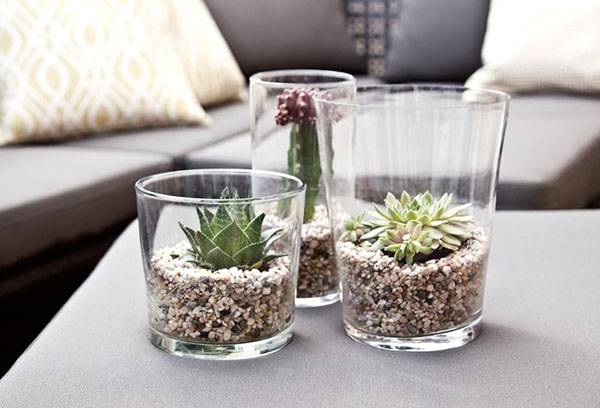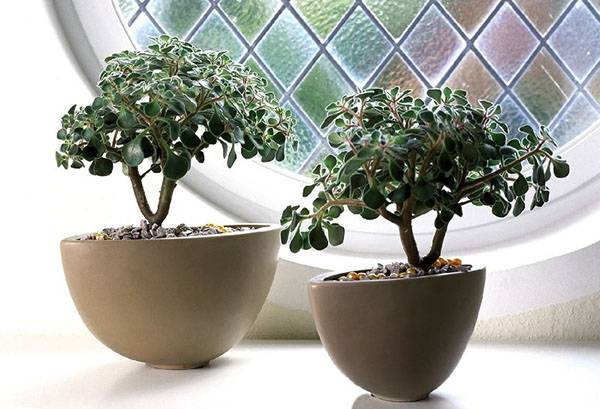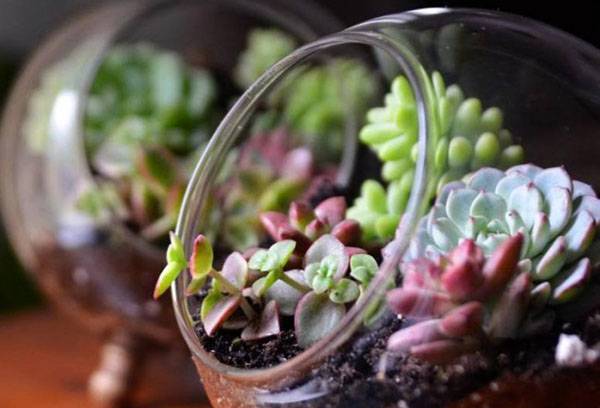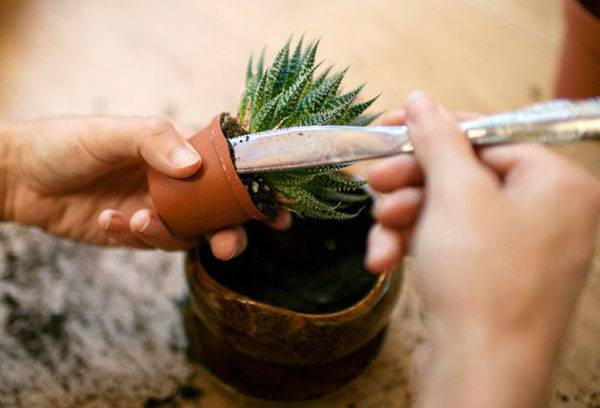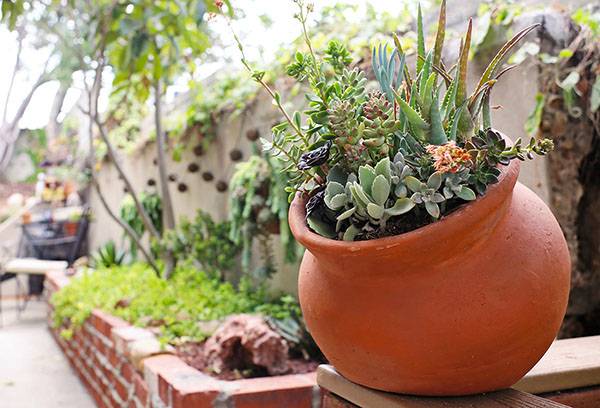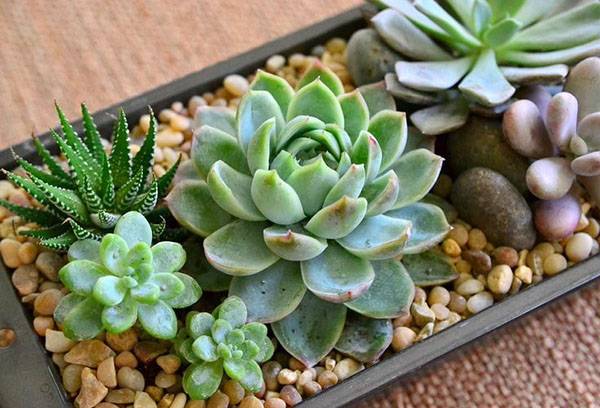What care do succulents require at home?
Succulents are plants that have tissues to store large amounts of water. In nature, they grow in arid climates, often in deserts. At the same time, many amateur gardeners are happy to grow domesticated types of succulents on their windowsills. What kind of care do succulents need when growing at home?

Forced beauty
Gardeners love succulents for good reason. Most of them are quite decorative. And this decorative effect is due, first of all, to the presence of special mechanisms in plants that allow them to adapt to drought conditions: evaporate less moisture, store it for a long time, and withstand the scorching sun and animals.
- A dense waxy film, spines, pubescence, a rosette structure of leaves with a reduced stem, and a rounded leaf shape are ways to reduce evaporation.
- Thick, fleshy stems, and in their absence a massive ribbed stem, are reservoirs for moisture reserves.
- The pale color of the leaves, red pigmentation is protection from the scorching sun.
At the same time, succulents are not united by origin; they can be found in different parts of the earth, where there is a lot of sun and little moisture. In nature, they are forced to protect themselves from being eaten by animals, so many of them have natural adaptations for this:
- thorns;
- poisonous or bitter juice;
- external resemblance to stones or even animals.
The most famous succulents are:
- stone flower (echeveria);
- sedum (sedum);
- Crassula (crassula);
- aloe;
- Kalanchoe;
- most types of cacti.
Succulents can be divided into two types according to the way they accumulate moisture:
- stem plants (accumulate moisture in special folds of the stems) - milkweeds and cacti;
- leafy (reserve moisture in the leaves) - echeveria, aloe, haworthia, lithops, young, sedum.
By the way, you can grow succulents not only one at a time in a pot. A succulent mix of several varieties, with different shapes and colors, will look much more decorative. Such compositions can be purchased ready-made or created independently. For example, collect cactus, haworthia, gasteria, lithops, echeveria in a wide ceramic bowl, add pachyphytum, sedum, crassula, monantes to them, decorate the composition with decorative stone, sprinkle the surface with small pebbles or tree bark - you will get a harmonious mix of shapes and colors that can delight eyes almost all year round.
Care depending on the time of year
In order to provide succulents with proper care and comfort, it is important to recreate for them at home the familiar microclimate of their habitat. This applies to the amount of moisture, light and temperature. One more fact needs to be taken into account here: winter is a period of natural dormancy for succulents, when the air temperature drops and the vital processes of plants slow down greatly. A period of rest may also occur in the summer, when the air temperature rises very sharply.
In general, succulents are accustomed to good light and can tolerate fairly intense heat. They do not tolerate a lack of light well: they stretch out, bend, and lose the natural color of the leaves. Flowering varieties do not bloom under such conditions.If exposed to excess sun, they can get burned; some species produce a crimson protective pigment. This is a signal that the succulents are too hot.
Advice
To avoid sunburn, but not to greatly reduce the amount of light, place pots of succulents away from the glass, towards the edge of the windowsill. Or better yet, on a table or chest of drawers in front of the windowsill.
In this case, the air humidity should be low - the same as the succulents are accustomed to. Accordingly, flowers that require high air humidity and love irrigation are not suitable as neighbors. To imitate natural watering, it is important to water succulents only when the earthen ball dries out. Watering should be plentiful, but rare - as happens in desert conditions.
- Growing season.
Most often this time is from March-April to October-November. At this time, the optimal temperature will be 25-35 degrees. During this period, you need to feed succulents about once a month with low-nitrogen fertilizers. They need to be watered with water, which in its properties is close to natural (rain or condensed from the air). Therefore, water with a low salt content is needed. It can be distilled, melt, rain or bottled water. During the active growing season, watering succulents should be carried out approximately once a week, if during this time the earthen ball has time to dry out. If not, then a little less often. If the soil dries faster, it is recommended to water the plants more often.
- Rest period.
From November-December to February-March, most succulents are in a dormant state, when all vegetation processes are greatly slowed down. In this case, +15 degrees will be enough for the plants.Feeding during this period is not advisable. During dormancy, succulents should be watered no more than once a month, since a larger volume of liquid (given the ability of these plants to store moisture) is not required to maintain vital activity.
In winter, it is more prudent to move pots with succulents closer to the glass. This will increase the amount of light and slightly reduce the air temperature around them. In addition, cold is an indispensable condition for flowering for some types of succulents.
Reproduction and transplantation
It is necessary to replant succulents during the growth period - best in the spring. It is important for the soil that it allows air and moisture to pass through well. Therefore, it should consist of a mixture of leaf soil, humus, sand and perlite.
Succulents can be propagated by seeds or plant parts. The second method is easier and therefore more common. These can be leaves, cuttings, leaf rosettes, sprouts, babies - each species has its own method of reproduction, but with any of them, rooting is quite easy. It is enough to bury the required part into the ground by about 1 cm and ensure optimal watering.
Diseases and pests
Some of the most dangerous pests for succulents are the coccid group of pests:
- scale insects;
- scale insects;
- false scale insects;
- felters;
- dactylopids.
They are extremely prolific and also have a protective coating, which makes them much more difficult to control. The greatest likelihood of infection with them exists in imported plants or those brought by tourists from tropical latitudes. To avoid problems with pests, it is necessary to leave the succulent for a month-long quarantine on a separate windowsill.During this period, it is important to carefully monitor the appearance of insect larvae, carefully examining the places where they accumulate: axils and veins of leaves, stems and trunks. However, some types of pests attack the root system, so they can only be detected by freeing the roots from the soil if the plant shows signs of oppression.
Where else can you expect pests to appear?
- From the street - when keeping plants outdoors in summer.
- From the clothes of a fellow florist.
- From the office (the flowers here are often unkempt).
- From bouquets, especially those not processed for long-term transportation (local flora).
- With greens, fruits or vegetables.
- With a soil mixture that was not sterilized before planting the succulents.
To combat these pests, if they are still found on succulents, you can use the following insecticides:
- "Aktara";
- "Aktellik";
- "Phosbecide."
The most common diseases in succulents are stem or root rot. These diseases are fungal, so in most cases they lead to the death of the plant. It is very rarely possible to find an unaffected part of the plant and replant it.
Most of the troubles associated with the proliferation of pests or the appearance of diseases arise from improper maintenance of succulents. Therefore, it is so important to maintain the temperature and humidity conditions, keep the plants clean, avoid crowding them on the windowsill, ventilate the room, and carry out preventive treatments. And then the succulents will delight their owners with their beautiful appearance and abundant flowering (if the species is flowering). After all, in essence, it is difficult to find a more unpretentious indoor plant than a succulent.
